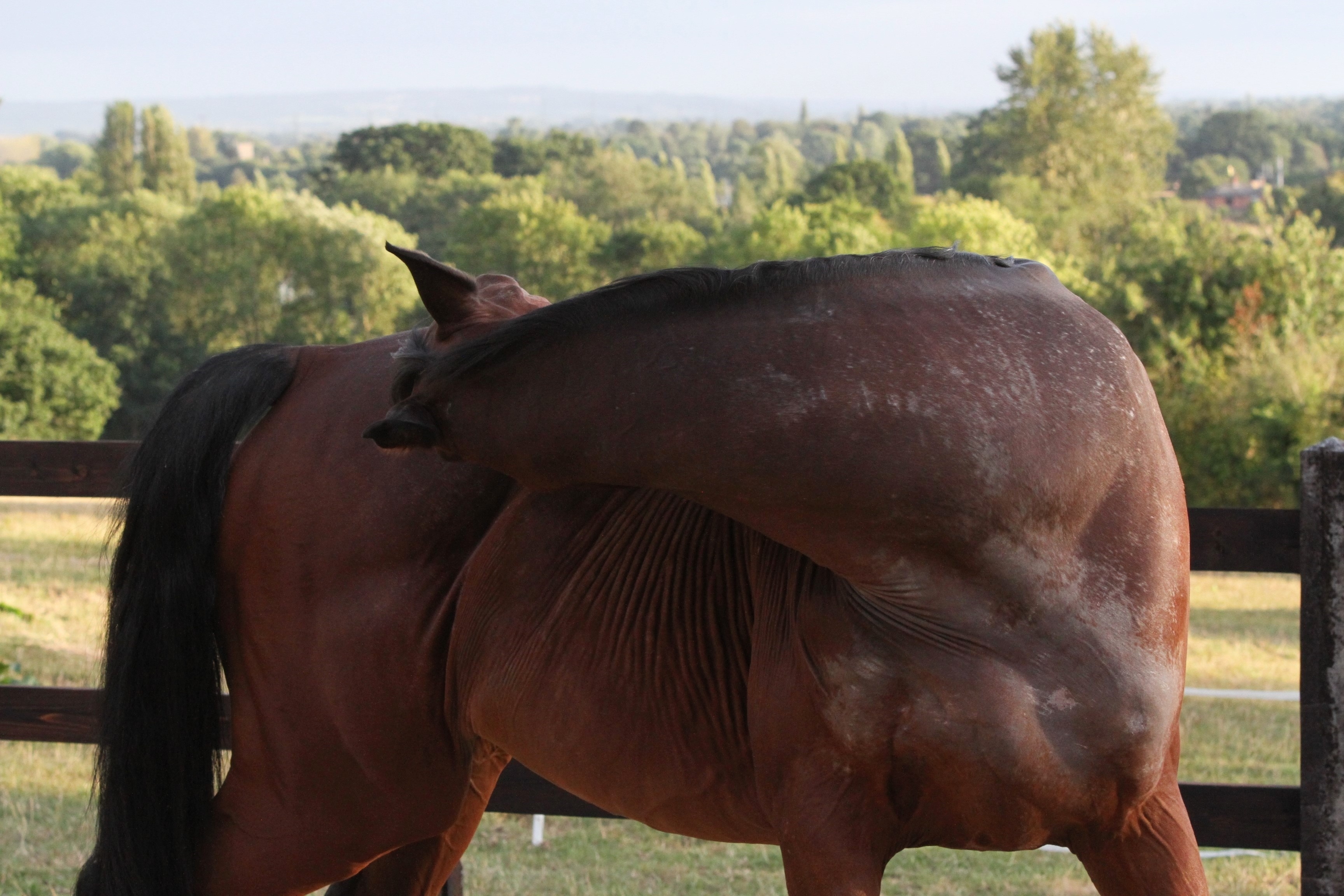
Food Allergy in Horses
Food allergy in horses is an adverse immune-mediated response to specific dietary proteins, leading to cutaneous, gastrointestinal, or systemic clinical signs. Unlike food intolerance, which does not involve the immune system, food allergy is typically IgE-mediated (Type I hypersensitivity) or delayed hypersensitivity (Type IV reaction). Though less common than insect bite hypersensitivity (IBH) or environmental allergies, food allergy should be considered in cases of chronic pruritus, urticaria, or recurrent colic that do not respond to conventional treatments.
Horses of any breed or age can develop food allergies, but genetic predisposition and prolonged exposure to specific dietary proteins may increase susceptibility. Common allergenic ingredients include cereal grains (oats, wheat, barley, corn), soy, alfalfa, and certain vegetable proteins, though individual sensitivities vary.
Pathophysiology and Immune Mechanisms
Food allergy in horses primarily involves Type I and Type IV hypersensitivity reactions. Type I reactions occur when dietary allergens trigger an excessive IgE-mediated immune response, leading to mast cell degranulation and histamine release, causing urticaria, pruritus, and edema. Type IV hypersensitivity involves T-cell activation and delayed inflammation, which may manifest as chronic skin irritation, digestive disturbances, or inflammatory bowel-like conditions.
The gastrointestinal tract plays a crucial role in immune tolerance. Normally, intestinal epithelial cells and gut-associated lymphoid tissue (GALT) regulate immune responses to dietary antigens, preventing excessive immune activation. In allergic horses, this regulation is disrupted, leading to an exaggerated immune response upon exposure to specific proteins.
Clinical Signs of Food Allergy in Horses
Clinical presentations of food allergy can be cutaneous, gastrointestinal, or a combination of both, making diagnosis challenging. The most frequently reported signs include:
Dermatological Manifestations
- Chronic urticaria (hives) or localized wheals
- Pruritus affecting the face, neck, or trunk
- Alopecia and excoriations from persistent rubbing
- Secondary skin infections due to self-trauma
Gastrointestinal Symptoms
- Recurrent mild to moderate colic episodes
- Chronic diarrhea or loose stools
- Weight loss despite adequate feeding
- Abdominal discomfort and bloating
Systemic and Other Signs
- Lethargy or poor performance
- Increased feed sensitivity and fussy eating behavior
Diagnosis of Food Allergy in Horses
Diagnosing food allergies in horses is complex, as there is no single definitive test. A stepwise approach combining history, clinical signs, and dietary trials is the most reliable method.
Exclusion of Other Causes
- Rule out insect hypersensitivity, atopic dermatitis, parasitic infections, fungal dermatitis, and contact allergies through skin scrapings, blood work, and intradermal testing.
- If gastrointestinal signs are present, investigate gastrointestinal ulcers, infections, or intestinal dysbiosis.
Dietary Elimination Trial
- Implement a strict elimination diet for 4–8 weeks, removing all suspected allergenic ingredients.
- Use a novel protein source (e.g., pea protein, coconut meal) or a hydrolyzed feed to minimize immune reactivity.
- Reintroduce potential allergens one at a time and monitor for clinical relapse.
PAX Serum Test
- Detects IgE antibodies against specific dietary protein components. Can be helpful to support elimination diet trials or confirming elimination trial responses.
Management and Nutritional Strategies
The primary treatment for food allergy in horses is long-term dietary modification to avoid the identified allergens while maintaining balanced nutrition.
1. Novel Protein and Hypoallergenic Diets
Using a single, novel protein source that the horse has not been previously exposed to is key in formulating a suitable diet. Examples include:
- Coconut meal
- Pea or lupin protein
- Alternative forages like timothy or teff hay instead of alfalfa
2. Fiber-Based Diets
Replacing grain-based feeds with high-quality fiber sources can reduce allergen exposure while maintaining energy levels. Options include:
- Beet pulp
- Soaked hay cubes or haylage
- Non-legume hay varieties
3. Omega-3 Fatty Acid Supplementation
Omega-3s are commonly included in diets formulated for horses with chronic skin and inflammatory conditions. These fatty acids are found in marine-based sources such as fish oil and algal extracts.
Dr. Baddaky Omega-3 is a high-quality marine-based omega-3 supplement specifically formulated for horses, providing EPA and DHA to support skin, coat, joint, and immune health. Regular supplementation contributes to a healthy skin barrier, improved coat shine, and overall well-being in equine patients.
4. Probiotics and Gut Microbiome Modulation
The gut microbiome plays a significant role in immune regulation, and imbalances may contribute to food hypersensitivity. Probiotics such as Lactobacillus spp. and Bifidobacterium spp. are often included in dietary plans to support gut barrier function and reduce immune overactivity.
5. Monitoring and Adjusting Diet
Each horse responds differently to dietary changes, so regular monitoring of clinical signs, body condition, and performance is essential. Some cases may require ongoing adjustments to protein sources and feeding strategies to maintain optimal health.
